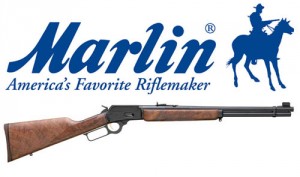 While I’ve been working I’ve overlooked some interesting firearms datapoints out there. Most interestingly, earlier this week MSNBC, never a friend of gun owners, ran a generally positive piece on concealed carry:
While I’ve been working I’ve overlooked some interesting firearms datapoints out there. Most interestingly, earlier this week MSNBC, never a friend of gun owners, ran a generally positive piece on concealed carry:
In the 1980s and ’90s, as the concealed-carry movement gained steam, Americans were killed by others with guns at the rate of about 5.66 per 100,000 population. In this decade, the rate has fallen to just over 4.07 per 100,000, a 28 percent drop. The decline follows a fivefold increase in the number of “shall-issue” and unrestricted concealed-carry states from 1986 to 2006.
The highest gun homicide rate is in Washington, D.C., which has had the nation’s strictest gun-control laws for years and bans concealed carry: 20.50 deaths per 100,000 population, five times the general rate. The lowest rate, 1.12, is in Utah, which has such a liberal concealed weapons policy that most American adults can get a permit to carry a gun in Utah without even visiting the state.
The decline in gun homicides also comes as U.S. firearm sales are skyrocketing, according to federal background checks that are required for most gun sales. After holding stable at 8.5 to 9 million checks from 1999 to 2005, the FBI reported a surge to 10 million in 2006, 11 million in 2007, nearly 13 million in 2008 and more than 14 million last year, a 55 percent increase in just four years.
Their accompanying open survey found more than 80% of the people answering the survey, “Very safe: If a crime is committed or a threat of violence made, they’ve got the means to respond.”
The U.S. Second Circuit Court of Appeals has ruled that a Connecticut man, Peter Kuck’s, “stake in the firearm license is a liberty interest tied to the right to bear arms recognized by state law.” Here’s the whole decision at the Volokh Conspiracy. The decision means that states who drag their feet or require a high level of jumping through hopes to grant or renew a concealed weapons permit may be open to Constitutional challenge. As Sebastian at Snowflakes in Hell notes, the Second Circuit encompasses New York City with its Sullivan Law, specifically designed to slwo and stymie firearms ownership.
If we receive the decision we hope for in McDonald early this summer, you can be sure the Sullivan Law is next in the legal sights.
Sebastian also notes that Arizona has moved one step closer to permitlessly carry. As one of my commenters (who are really smart, I might add!) noted recently, we should all be movng toward permitless carry, concealed and open. I agree that permitless carry is closer to my reading of the Second Amendment (which, of course, doesn’t matter in the slightest).
GunsAmerica, the huge firearms sales site, recently published an article on the state of the gun blogosphere, which concluded that all in all we’re doing just fine. Nice list of the 20 gun blogs not to miss (which includes this one). Read the whole thing. OI also suggest stopping by Farmer Frank James blog, Corn, Beans Spent Brass, an Empty Page and a Deadline, on his feral hog apocalypse hunting trip…darned interesting! Good job, Frank.
And finally a sad point. The venerable firearms manufacturer Marlin will close it’s doors.
Workers at the Marlin Firearms Co. in Connecticut say they’ve been told the 140-year-old company will close next year and all 265 employees will lose their jobs.
Workers at the North Haven company say they learned about the closure plans Thursday. They told local news media layoffs will begin in May and the company will close by June 2011.
My good friend John Snow over at the Gun Shots blog from OUTDOOR LIFE puts it this way:
For people like me, whose first image of a deer rifle was a lever gun, this is a black day. The virtues of a lever gun are many—they are handy, elegant, effective and, from the perspective of a gun nut, have great histories and are interesting examples of industrial design. It is discouraging to think that they can’t be produced in such a way as to be profitable—especially in light of the some of the advances Marlin achieved in partnership with Hornady Ammunition in recent years.
I think there are a number of factors at work here. First, the Obama Bubble — which Jim Shephard over at The Shooting Wire is discussing today — sucked a lot of “gun money” out of the economy…that is, a large portion of potential gun buyers’ discretionary income for the at the very least the rest of 2010 has been spent. A lions share of that money went to black rifles, with handguns close behind. Nothing wrong with that…in a consumer society the buyer “votes” with his or her wallet.
The lever gun seems like “your grandfather’s Oldsmobile,” although in reality nothing could be farther from the truth. Lever guns are ubiquitous and thus taken for granted…until something like the Winchester closing a few years back sent ’94 Winchester prices into the stratosphere. The nameplate came back, of course…at a much higher price.
Secondly, despite the advances John mentions in lever cartridges, the rifle market focus remains on precision shooting bolt guns and semiautos. The huge number of used lever guns already in the market creates a drag on the new lever gun market. Cowboy action shooting has had, after an initial boom, a net negative effect for Marlin’s guns. First, there has been a huge proliferation in types of available lever guns, including the generally excellent Italian clones of the Winchester 1860, 1866, 1873, 1876, 1886, 1892 and 1894 models, even the Colt Burgess! The Italian clones exhibit the fire workmanship that used to be associated with American guns — color-casehardening, deep bluing, upgraded wood, etc. — in a flood of calibers. Even though the Italian guns are now at a much higher price point (baseline $1000), they’ve siphoned a lot of the money away from the American nameplates of Marlin and Winchester (to the destruction of that brand). Additionally, CAS rules allowed the “short-stroking” of the toggle-link guns, the 1873s and 1866s, to reduce the arc of the lever, thereby making the gun faster to operate. The heavier, clunkier 1873s quickly took over the cowboy market, pushing out the Marlins (which had dominated the sport in its early days). Marlins became an entry-level rifle, and as cowboy has leveled out with fewer new shooters coming in, sales of Marlins in pistol calibers languished.
Obviously, Marlin has other lines — their bolt guns and their rimfire series, including the Model 60, which Marlin correctly bills as the “most popular .22 in the world.” But it’s a tough bolt gun market out there, and the .22s have to face the Ruger 10/22 juggernault.
Interestingly enough, last night at dinner TBD series producer Tim Cremin posed one of those “only one gun” questions…which rifle would we take if ewe could only have one. Pincus chose a .308 short-barreled bolt action; I chose a 30-30 lever gun, “probably a Marlin.” My thinking was a reasonable and commonly available hunting cartridge, relative fast to cycle, an excellent self-defense rifle, light and easy to carry close to indestructible. Right now my “bedroom rifle” is a Marlin 1894 in .44 Magnum, loaded with 240-grain Black Hills JHPs…fast, accurate and in a proven manstopping calber.
I will also say unequivocally that there’s a Marlin 1895GBL 6-shot 45-70 “Guide Gun” in my immediate future, even if I have to sell off a bolt gun or a pistol to get it…
It might need a trip ‘way up north to Wild West Guns, too…

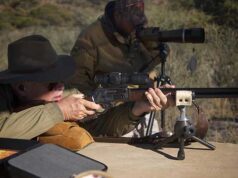
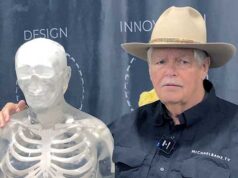
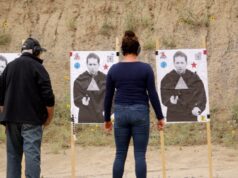
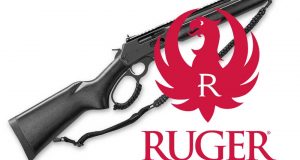
It’s a shame about Marlin closing its doors. I own a Marlin lever action 30-30, and also a Winchester lever action 30-30. I prefer the Marlin, mainly because it’s a bit heavier, and more comfortable to shoot. Not to mention my Marlin 25 N. Both are great guns, to which I would never think of replacing. I bought the Marlin 25 N used when I was 16 or so, and I have put just about everything I could through it, and it always worked, has seen nearly 8,000 rounds just from me shooting is, and the bore is still in great shape, over all it’s pretty much in new condition. It’s a sad note indeed.